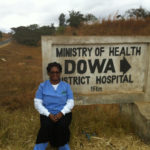
Is it Food Poisoning
You had a wonderful meal or you were adventurous eating street food in a foreign country. Now, 6-12 hours after eating you don’t feel so well. You have an overwhelming feeling of sickness, sweating, abdominal crampy; and then …. Nausea, vomiting, diarrhea. This is your body’s way of getting rid of the contamination and bacteria [typically E. coli, Salmonella, Norovirus].
Food poisoning cannot be diagnosed unless we have a sample of the food and test it for toxins [poisons] which generally takes 3-4 days. Food poisoning or contamination is “suspected” if a person becomes sick and have certain symptoms after a certain time of eating the food.
We call it Gastroenteritis. Which means there is inflammation and possible infection of the gastrointestinal [stomach & intestines] tract in the body. It can be brought on by irritation, virus or bacteria; and they have been ingested by contaminated food and/or water.
The person will have nausea, vomiting and diarrhea; or sometimes only nausea/vomiting or only diarrhea. We can test the stool for certain viruses, bacteria and parasites but once again it will take 3-4 days for the results. We generally treat the symptoms until the known cause is found. The cause of symptoms is required if there is an influx of a people with the same symptoms from the same area: restaurant, daycare, cruise ship, etc.
The severe consequences of gastroenteritis:
- * Dehydration and electrolyte loss – particularly in the very young [under 5 year old] and very old [over 65 year old]. The electrolyte loss can cause problems with the heart and kidneys. Re-hydration is the key. If persistent diarrhea for 48 hours, they should see their doctor or go the ED. Self-rehydration for mild cases can be done with water, electrolyte replacement drinks [no caffeine], coconut water, or 2% milk. Diabetics should be seen earlier because persistent diarrhea will cause an acid-balance imbalance.
- * Gastritis or bleeding – persistent vomiting will break blood vessels in the stomach and esophagus; causing red streaks of blood the vomit material. Dark vomit is a sign of possible bleeding in the stomach and possible ulcers; the blood has mixed with the gastric juices in the stomach causing it to have a dark, coffee ground appearance.
- * Obstruction of the intestines – the persistent irritation, inflammation or infection may cause severe swelling of the intestines. They will swell, balloon and close off; or even twist. This may cause part of the intestine to not get enough oxygen and die; the deadly cause will be if the swollen intestines rupture spilling the contents in abdominal cavity and causing infection to spread throughout the body [sepsis].
So what should I do? Hydrate, Hydrate, Hydrate
Avoid foods that have been sitting out on display for a long period of time. If it smells suspicious, don’t eat it. If the water source is questionable, drink filtered or bottle water. Be cautious of unpasteurized milk and cheeses.
Re-hydrate with water and replace electrolyte loss with electrolyte drink [no caffeine], coconut water, and/or 2% milk. Drink one glass of water [8 oz] with each stool. If you have diarrhea more than 48 hours, seek medical care; and write down what you have eating prior to getting ill. Your treatment may include anti-diarrhea medications and/or antibiotics. Restart you diet with clear liquids, bland foods, and avoid spicy foods for 24-48 hours. Ginger [candy, tea, root] is a good source to ease the nausea.
Yvette McQueen MD, The Travel Doctor






